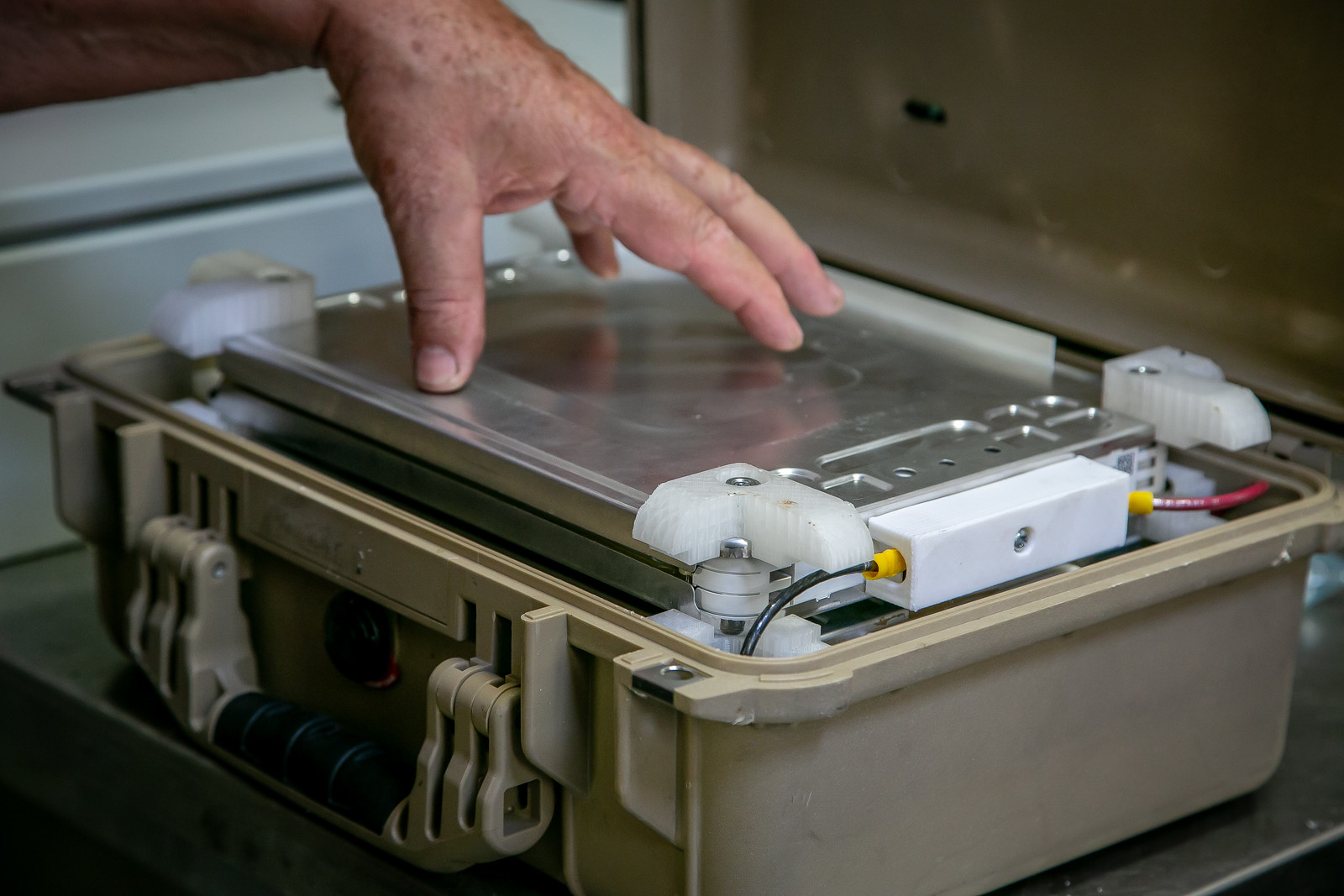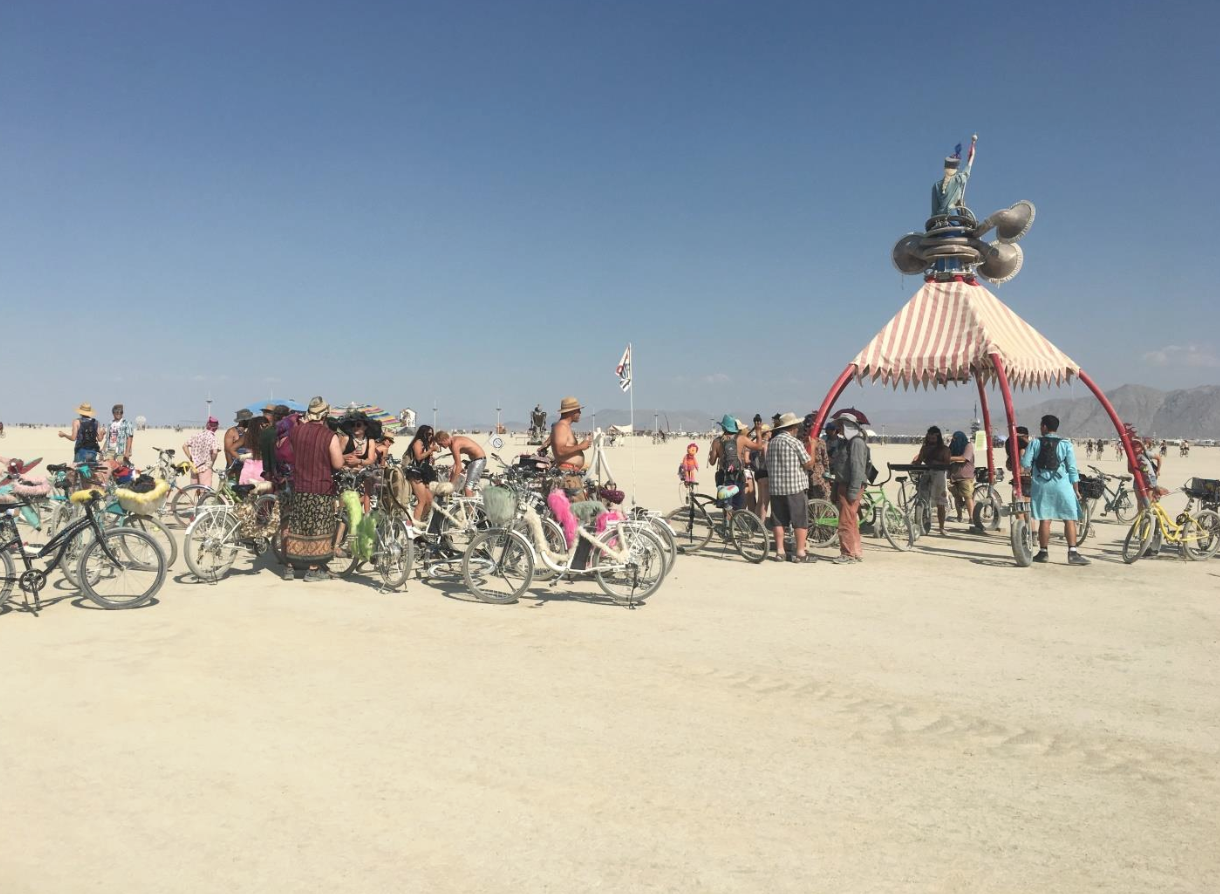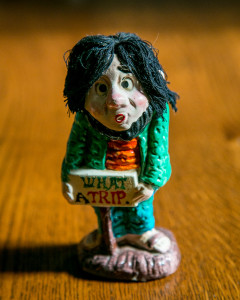I left off in my first post about Roger Carr with Burning Man 2018.
The theme this year is “I, Robot.” The Burning Man website explains: “This year we invite participants to use their native genius to create expressive robots of all kinds. We also welcome art that examines how it feels to live in a world that is filled with robots that watch us, track us, hack us, read our tweets and emails, listen to our phone calls, and sell this information to other robots. This is a science fiction theme. As always, any work of art by anyone, regardless of our theme, is welcome at the Burning Man event.”
Which brings us to the baritone horns and sousaphones.
The sousaphone is in the same family as the tuba. J.W. Pepper created the first one in the 1890s at the request of John Philip Sousa. It is bent in a circle to fit around the body of the musician, making it easier to play than the tuba while marching. It ends in a large bell pointing forward, projecting the sound of the instrument above the heads of the band.
In modern use, the bell of a Sousaphone is pointed out horizontally, not vertically upwards like the early one
I first saw the horns in 2015. Roger bought them on a pallet at a Cal excess and surplus/salvage auction -four sousaphones and two baritone horns. When I saw them, his wife Jana Olson had vague plans for a chandelier. That I’d like to see! I told her it was a great idea.
Roger came up with a different idea for them.
He came to understand that with the tuba – or any other brass instrument – the sound is produced by lip vibration into a large mouthpiece, not necessarily by the flow of air.
To the mind of Roger Carr, the obvious thought for use of the horns was a Burning Man installation that features robotically produced tuba music. I told him it was a great idea.
I would describe Roger’s project description is part genius, part serious, and part prank. He describes it as “all fun, all prank.”
He rightly notes that the word “robot” was first used in 1920 by Karel Capek in Rossum’s Universal Robots (RUR). Then, Roger the Prankster suggests that “robot” might possibly come from the earlier “Rossum’s Original Band of Tubas.” He claims that his project is a “faithful but slightly technically enhanced” reconstruction of Capek’s brass band.”
How to make the horns sound? Sascha Tietz explored this challenge in Germany and Austria, but the results were not promising.
The band of tubas starts with a keyboard.
Gray Haertig, a Carr friend, suggested using compression drivers – the sound source for some types of loudspeakers. The keyboard leads to a MIDI – a Musical Instrument Digital Interface that connects devices that make an control sound, allowing them to communicate with each other. Then comes a compression driver to produce the vibration, and then the horns. Carr says “It worked pretty well, but not loud enough. Bruce Koball stepped in and designed pre-amps for us. The result was deafening, just about right.”
It can play more than one note at the same time, making harmony and chords possible. It can achieve a higher range of notes than a human tuba player could achieve. Imagine Les Barricades Mystérieuses composed by François Couperin for harpsichord in 1717 or Dmitri Shostakovich’s Fugue #7 or The Road to Isles played by a tuba orchestra.
The colored rendering gives an idea of how the whole thing would fit together. The figure on top of it all is a mannequin. The vehicle would be operated and the tubas played by remote control.
The legs are lamp posts that Roger bought at Urban Ore.
Roger is using wheels and tires made for a BMX bike. A BMX (bicycle motocross) bike is an off-road sport bicycle used for racing and stunt riding.
Two wheels will be motorized. Two will be on springs, and the fifth will be simply on a fork at the end of the leg.
Roger met an electric car tinkerer and was converted to the Nissan Leaf’s lithium-ion batteries. He gangs three of them to produce 24 volts. Lithium-ion batteries have higher energy densities than lead-acid batteries or nickel-metal hydride batteries, so it is possible to make the battery size smaller than others.
 To recharge the batteries – solar panels of course.
To recharge the batteries – solar panels of course.
Roger is working with a cadre of friends on the project – Rob Liesenfeld (electronics), Bruce Koball (pre-amp), Gray Haertig (compressor), Robert Rogers mechanical assembly), John Hollis (rendering), Peter Sisk (software), and others. They used Raspberry Pi (a small single-board computers developed by the Raspberry Pi Foundation to promote the teaching of basic computer science) on the ground (the “Mud Pi”) to transfer data up to a “Pi in the sky” that would control the synthesizer.
We checked in on Roger and his Rossum’s Original Band Of Tubas in mid August before the trip to Nevada.
Three of the five legs were assembled. They will be disassembled, driven to the playa, and assembled there using a scissor-lift from Burning Man’s support equipment provided by the ARTery artist support services.
Roger bought four big-tire bikes on eBay, perfect for getting around in the desert. In order to keep the dust down, there is a ban on vehicles at Burning Man, although at night some Mutant Vehicles blessed by the Department of Mutant Vehicles are allowed to motor around. The bikes with the fat tires are perfect for the playa.
Roger mounted a platform on the handlebars of this bike for the keyboard which will be used to play the tubas.
The collection of horns and the band-leader have come together nicely. Vivian is the tuba-band leader.
The crew of four technicians and four docents and nominal sane leader Jana Olson will wear band hats and t-shirts. As band leader, Vivian gets a plume on her hat. The others don’t.
On Wednesday before Burning Man, Roger and Scott Wills, who wrote the code for the radio control to drive the motors on two of the wheels, drove a truck out to the Playa. They unloaded on Thursday and set up camp. Robert Rogers, Heidi Barthelemy, Rob Kisenfeld, and Sasha Tietz joined them on Friday and they spent the next three days assembling everything in the midst of terrible dust storms that made work difficult. They were ready to go on Monday.
The crew posed here in their t-shirt uniforms with Vivian.
Roger describes the routine: “Go out to the ROBOT and offer Burners a chance to play the keyboard. Not everyone could play, but we did get some exceptional keyboardists who loved the fun of the instrument.”
The high point for Roger was when the Brass Liberation Orchestra passed by on an art car and the two groups jammed together for an hour.
On Thursday evening of the event, there was a competition of marching bands in the center camp tent. Roger: “We were too big to get in, but we did move to center camp, and jammed with the winning band (the BLO) for an hour that evening.”
In the end, Roger was faced with one of the problems of doing a large art insulation like the tuba orchestra. Roger: “Fortunately, Clay McKinney, the mayor of our Alternative Energy Zone village, asked if I might donate it to him. What a deal! Problem solved! There is nobody I’d rather give it to After disassembly on Monday, Scott and I dropped it all off at his shop in Sparks.”
Roger and Jana typically do Burning Man Projects every other year, which would mean not building for the 2019 Burning Man with its Metamorphoses theme.
What a lot of work and thinking and doing by a group of talented people. All for a tuba orchestra in the desert for a few days. Willa Cather said “The end is nothing, the road is all.” I agree with this sentiment. Gandhi said something sort of along the same lines – nothing that we do makes any difference, but it is critically important that we trie. Bob Dylan’s version – “We’ll climb that hill no matter how steep, but we still ain’t goin’ no where.”
I think that in this case, the road was all, and the end was all too.
I asked my friend to review a draft of this post.
“You know how you told Jana her idea for a chandelier was a great idea and then told Roger that his idea for a Burning Man installation was a great idea?”
“Yes. So?”
“So nothing. I am reminded of Mad Magazine’s November 1960 covers. It was reversible. If you picked it up one way it was this:
“If you flipped it over, this was the cover.
“Reversible! Flexible! We were with you all the way, Jana! We were with you all the way, Roger!”
I frankly saw no comparison and I told him as much. My friend wasn’t done.
“Do you wonder if the Pepper who made the sousaphone for Sousa was the inspiration for Sergeant Pepper?”
I said it hadn’t occurred to me.
“Good. He wasn’t.”
“The inspiration was James Melvin Babington. From a military trading card. He served in the 16th Queen’s Lancers in the Second Boer War and the First Calvary Brigade.”
I am virtually certain that my friend was not done with tangents. He was on a roll and he no doubt had other places to go. I decided – dime to stop the explorations and call the previous question. What does he think of Roger Carr’s tuba band?





























brilliant as usual. where else could one go for a willa cather quote.
Truly inspiring! Since humans added banging, blowing, and plucking to good old-fashioned singing, music and machines have always marched together. Roger and Jana should take this to Mardi Gras!
And now for something completely different. This is a wonderful collaboration of creative hearts and minds. Is there a link to some video with sound? I’d love to see and hear it in action. Way to go Roger.
I loved playing Roger et al’s creation at Burning Man 2018. It was the highlight of the event for me and the sound it produced was unique and quite beautiful. Thanks for all involved.